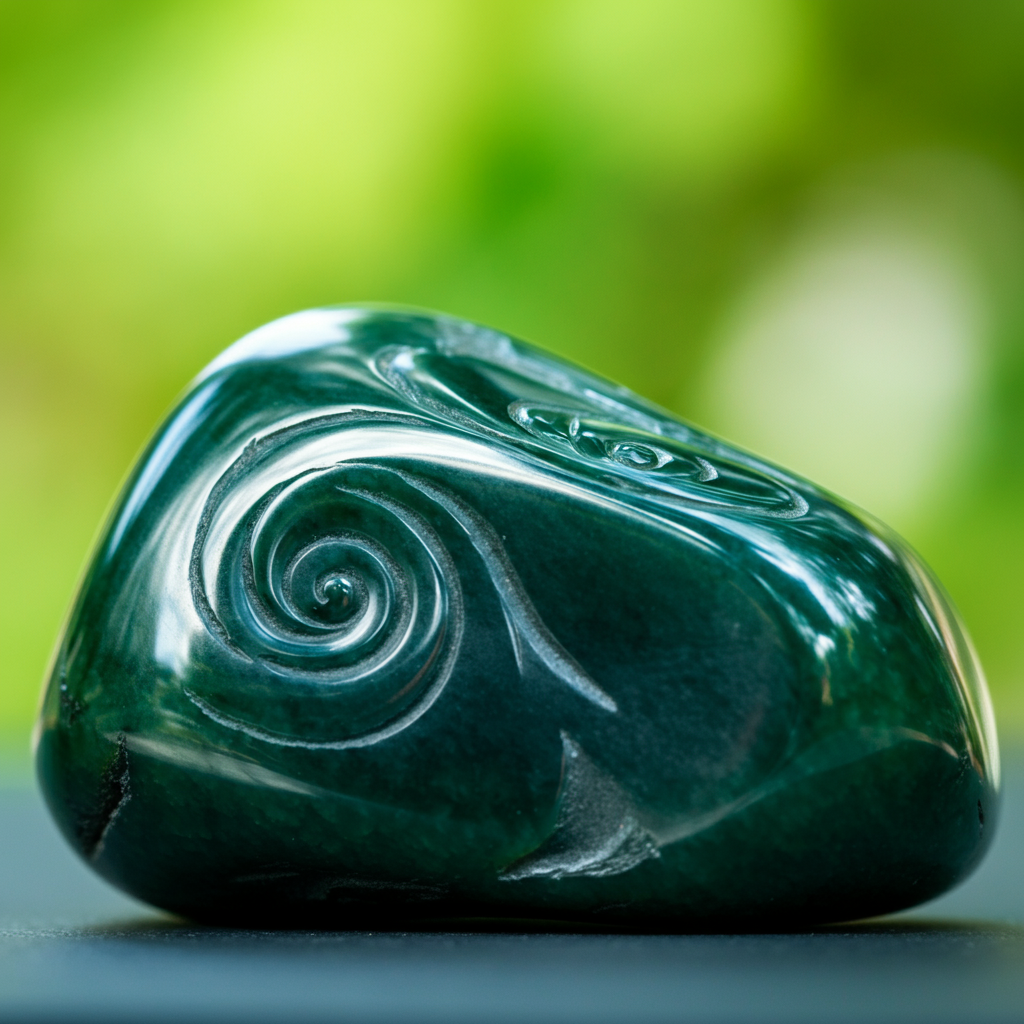Jade has captivated civilizations for over 7,000 years, earning reverence as both a spiritual talisman and a symbol of status. This remarkable stone—known as “jadeitový kameň” in Slovak—represents far more than simple ornamentation. From ancient Chinese emperors to modern collectors, jade continues to fascinate with its mesmerizing beauty and profound cultural significance.
This comprehensive guide explores everything you need to know about jade stone, from its geological formation to its spiritual properties, helping you understand why this gemstone remains one of the most sought-after minerals on Earth.
What is Jade Stone?
Jade refers to two distinct minerals: jadeite and nephrite. Both share similar appearances but differ significantly in composition and value. Jadeite, the rarer and more valuable variety, consists of sodium aluminum silicate, while nephrite contains calcium magnesium silicate.
The term “jade” originated from the Spanish phrase “piedra de ijada,” meaning “stone of the side,” referencing its believed ability to cure kidney ailments. Chinese culture, however, has always recognized jade as much more than a healing stone—it represents virtue, wisdom, and immortality.
The Science Behind Jade Formation
Jade forms under extreme pressure and temperature conditions deep within the Earth’s crust. This process, called metamorphism, occurs when existing rocks undergo transformation due to geological forces. The result is an incredibly durable stone with a hardness rating of 6-7 on the Mohs scale.
Jadeite typically forms in subduction zones where oceanic plates slide beneath continental plates. These high-pressure, low-temperature environments create the perfect conditions for jadeite crystallization. Nephrite, conversely, forms through contact metamorphism when limestone or dolomite rocks encounter igneous intrusions.
Types and Colors of Jade
Jadeite Varieties
Imperial Jade: The most valuable jade variety, displaying a vibrant emerald-green color with exceptional translucency. Myanmar produces the finest imperial jade, commanding prices that rival precious gemstones.
Lavender Jade: Features beautiful purple hues ranging from pale lilac to deep violet. This variety has gained popularity among collectors for its unique coloration.
White Jade: Exhibits pure white to cream coloration and represents purity and spiritual cleansing in many cultures.
Yellow Jade: Ranges from pale butter yellow to rich golden tones, symbolizing prosperity and good fortune.
Nephrite Varieties
Spinach Jade: Displays dark green coloration with black inclusions, resembling spinach leaves.
Mutton Fat Jade: The most prized nephrite variety, featuring a creamy white appearance with subtle translucency.
Black Jade: Exhibits deep black coloration, often used for protective amulets and ceremonial objects.
Cultural Significance of Jadeitový Kameň
Ancient Chinese Traditions
Chinese civilization has treasured jade for millennia, considering it more valuable than gold. Confucius identified jade with virtue, listing eleven qualities that parallel human virtues: wisdom, justice, compassion, modesty, courage, purity, ingenuity, patience, tranquility, vitality, and loyalty.
Ancient Chinese burial customs included jade burial suits, believing the stone would preserve the deceased’s body and guide their spirit to immortality. The Han Dynasty created elaborate jade suits using thousands of jade pieces connected with gold or silver wire.
Mesoamerican Cultures
Maya and Aztec civilizations revered jade as a symbol of life, fertility, and power. They crafted intricate masks, jewelry, and ceremonial objects from jade, often placing jade beads in the mouths of the deceased to ensure safe passage to the afterlife.
The Olmec civilization, predating both Maya and Aztec cultures, created some of the earliest known jade artifacts in the Americas, including the famous Olmec jade masks that demonstrate sophisticated carving techniques.
Modern Cultural Impact
Contemporary cultures continue embracing jade’s symbolism. Asian communities worldwide maintain traditional beliefs about jade’s protective properties and good fortune. The stone remains a popular choice for engagement rings, family heirlooms, and spiritual jewelry.
Spiritual and Metaphysical Properties
Healing Properties
Practitioners of crystal healing attribute numerous benefits to jade stone:
Physical Healing: Believed to support kidney function, improve circulation, and promote overall vitality. Some traditions suggest jade can help regulate blood pressure and strengthen the immune system.
Emotional Balance: Associated with emotional stability, stress reduction, and inner peace. Many users report feeling calmer and more centered when wearing jade jewelry.
Spiritual Growth: Considered a stone of wisdom and spiritual insight, jade supposedly enhances meditation practices and promotes spiritual development.
Chakra Alignment
Jade primarily corresponds to the heart chakra, promoting love, compassion, and emotional healing. Green jade varieties particularly resonate with heart chakra energy, while other colors may align with different chakras:
- White jade: Crown chakra
- Yellow jade: Solar plexus chakra
- Lavender jade: Third eye chakra
- Black jade: Root chakra
Identifying Authentic Jade
Visual Inspection
Authentic jade exhibits specific visual characteristics:
Color Distribution: Natural jade displays uneven color distribution with subtle variations throughout the stone. Synthetic materials often show uniform coloration.
Translucency: Genuine jade possesses a unique translucent quality, allowing light to penetrate while maintaining opacity. Hold the stone up to light to observe this characteristic.
Surface Texture: Real jade feels smooth yet substantial, with a distinctive coolness when touched. The surface should appear lustrous without being overly glossy.
Professional Testing Methods
Density Test: Jade has a specific gravity of 3.3-3.5, making it heavier than most imitations. Compare the stone’s weight to similarly sized objects.
Hardness Test: Genuine jade resists scratching from steel but can be scratched by harder materials like quartz.
Sound Test: Authentic jade produces a clear, bell-like sound when gently tapped with a metal object.
Caring for Your Jade Stone
Cleaning Methods
Gentle Soap Solution: Clean jade with mild soap and warm water using a soft brush. Avoid harsh chemicals that might damage the stone’s surface.
Ultrasonic Cleaners: Use cautiously, as some jade treatments may be affected by ultrasonic cleaning. Consult a professional jeweler for valuable pieces.
Steam Cleaning: Generally safe for untreated jade, but avoid if the stone has been dyed or treated.
Storage Recommendations
Store jade separately from harder gemstones to prevent scratching. Wrap pieces in soft cloth or place them in padded jewelry boxes. Avoid extreme temperature changes that might cause thermal shock.
Maintenance Tips
Regular maintenance preserves jade’s beauty:
- Inspect settings and mountings periodically
- Have valuable pieces professionally cleaned annually
- Avoid exposing jade to harsh chemicals or extreme temperatures
- Remove jade jewelry before swimming or exercising
Purchasing Guide for Jade Stone
Quality Factors
Color: Intense, evenly distributed colors command higher prices. Imperial green jadeite represents the pinnacle of jade quality.
Translucency: Greater translucency increases value, with the finest specimens allowing light to pass through while maintaining color intensity.
Texture: Fine-grained texture indicates higher quality. Avoid stones with visible crystals or coarse texture.
Carving Quality: For carved pieces, assess the craftsmanship, detail level, and artistic merit.
Price Ranges
Jade prices vary dramatically based on quality, type, and origin:
- Commercial grade nephrite: $2-50 per carat
- Fine nephrite: $50-1,000 per carat
- Commercial jadeite: $100-1,000 per carat
- Fine jadeite: $1,000-20,000 per carat
- Imperial jadeite: $20,000+ per carat
Buying Tips
Research Sellers: Purchase from reputable dealers with gemological certifications and return policies.
Request Certificates: Insist on gemological certificates for expensive pieces, particularly jadeite.
Understand Treatments: Learn about common jade treatments like dyeing, bleaching, and polymer impregnation that affect value.
Compare Prices: Research current market prices and compare similar pieces from multiple sources.
Investment Potential of Jadeitový Kameň
Market Trends
The jade market has experienced significant growth, particularly for high-quality jadeite. Chinese economic prosperity has increased demand for premium jade, driving prices upward for exceptional pieces.
Myanmar remains the primary source of fine jadeite, but political instability and mining restrictions have affected supply, contributing to price increases.
Investment Considerations
Quality Priority: Focus on the highest quality pieces within your budget, as these typically appreciate most consistently.
Rarity Factor: Unusual colors or exceptional specimens may offer better investment potential than common varieties.
Provenance: Documented origin, especially from renowned sources like Myanmar or Guatemala, can enhance value.
Market Timing: Jade markets can be volatile, requiring careful timing and market knowledge.
Embrace the Timeless Beauty of Jade
Jade stone continues captivating collectors, spiritual practitioners, and jewelry enthusiasts worldwide. Its combination of natural beauty, cultural significance, and metaphysical properties makes it a truly unique gemstone worthy of appreciation and study.
Whether you’re drawn to jade’s spiritual properties, cultural heritage, or simply its stunning appearance, understanding this remarkable stone enhances your appreciation for one of nature’s most extraordinary creations. From ancient burial suits to modern jewelry, jade remains a bridge between past and present, connecting us to thousands of years of human fascination with this extraordinary mineral.
Consider adding jade to your collection or spiritual practice, but remember to purchase from reputable sources and care for your pieces properly. The journey of jade ownership often becomes as meaningful as the stone itself, connecting you to a tradition spanning millennia and cultures worldwide.

















